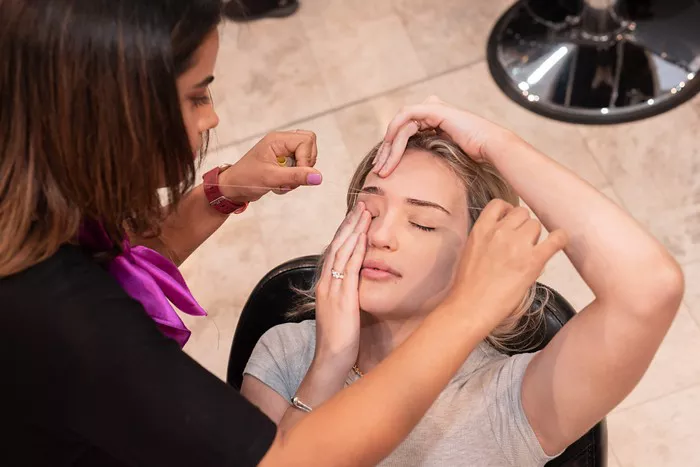A facelift is a surgical procedure that can provide significant rejuvenation and a more youthful appearance by addressing sagging skin, wrinkles, and other signs of aging on the face and neck. After undergoing a facelift, proper post-operative care is crucial to ensure optimal healing and long-lasting results. Knowing what not to do during the recovery period is just as important as knowing what to do. In this article, we will explore the essential guidelines for post-facelift care and highlight the things you should avoid after undergoing a facelift.
1. Avoid Strenuous Activities
Engaging in strenuous activities, such as heavy lifting, vigorous exercise, or any activity that increases blood pressure, should be strictly avoided during the initial weeks of the recovery period. These activities can put unnecessary strain on the incisions and potentially disrupt the healing process. It is important to follow your surgeon’s instructions regarding physical activity limitations and gradually reintroduce exercise as advised.
2. Do Not Smoke
Smoking significantly impairs the healing process and can have a detrimental effect on the results of your facelift. Nicotine and other harmful substances in tobacco smoke reduce blood flow, increase the risk of infection, and delay wound healing. It is essential to refrain from smoking before and after your facelift to minimize complications and achieve optimal results. If you are a smoker, it is recommended to quit smoking well in advance of your surgery and continue to abstain during the recovery period.
3. Avoid Excessive Sun Exposure
Protecting your skin from excessive sun exposure is crucial during the healing phase after a facelift. The sun’s harmful ultraviolet (UV) rays can damage the delicate healing skin, increase the risk of complications, and cause pigmentation changes. It is advisable to avoid direct sun exposure, especially during peak hours, and wear a broad-spectrum sunscreen with a high sun protection factor (SPF) when going outdoors. Additionally, wearing a wide-brimmed hat and using sunglasses can provide extra protection for your face.
4. Do Not Skip Medications or Ignore Post-Operative Instructions
Following your surgeon’s instructions regarding medications and post-operative care is vital for a smooth recovery. Take any prescribed medications as directed, including pain medications, antibiotics, and any topical treatments. Avoid skipping doses or altering the prescribed regimen without consulting your surgeon. It is also important to adhere to the recommended post-operative care routine, such as cleaning and caring for the incision sites and using any recommended skincare products.
5. Avoid Alcohol Consumption
Alcohol consumption should be avoided during the early stages of your recovery. Alcohol can interfere with the healing process, increase the risk of bleeding and complications, and prolong swelling. It is best to refrain from drinking alcohol until your surgeon advises that it is safe to do so.
6. Do Not Apply Excessive Heat or Cold
Avoid applying excessive heat or cold to your face during the recovery period. Both hot and cold temperatures can negatively impact the healing process and potentially damage the delicate skin. Avoid hot showers, saunas, steam rooms, or any activity that exposes your face to excessive heat. Similarly, avoid applying ice packs or cold compresses directly to your face, as this can compromise blood flow and delay healing.
7. Do Not Neglect Your Incisions
Proper care of your incisions is essential for optimal healing and minimizing the risk of complications. Follow your surgeon’s instructions on how to clean and care for your incisions. Avoid touching or scratching the incisions and keep them clean and dry. It is important to resist the urge to pick at any scabs or remove any sutures prematurely. If you notice any signs of infection, such as increased redness, swelling, warmth, or discharge, contact your surgeon promptly.
8. Avoid Facial Massages and Treatments
During the early stages of recovery, it is important to avoid any facial massages, intense facial treatments, or other procedures that may put pressure on the healing tissues. These activities can disrupt the healing process and potentially lead to complications. Consult with your surgeon about when it is safe to resume facial massages or other treatments.
9. Do Not Neglect Follow-Up Appointments
Follow-up appointments with your surgeon are crucial for monitoring your progress, evaluating the healing process, and addressing any concerns or questions you may have. It is important not to miss these appointments and to communicate openly with your surgeon about any issues or changes you may experience during your recovery.
10. Do Not Rush the Healing Process
Patience is key during the recovery period following a facelift. It is important to understand that the healing process takes time, and individual recovery timelines can vary. Avoid the temptation to rush the healing process or expect immediate results. Follow your surgeon’s guidance, be gentle with your face, and give your body the time it needs to heal properly.
Conclusion
Understanding what not to do after a facelift is just as important as knowing the appropriate post-operative care guidelines. By avoiding strenuous activities, refraining from smoking, protecting your skin from excessive sun exposure, following medication instructions, and adhering to post-operative care recommendations, you can help ensure a smoother recovery and enhance the long-term results of your facelift. Remember to consult with your surgeon for specific instructions tailored to your individual needs and always reach out to them if you have any questions or concerns during your recovery journey.

